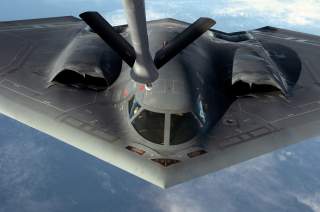8 Million People Could Die in a Nuclear War with North Korea
And that is just for starters.
WHAT IS to be done? There are five potential pathways to mitigating the North Korea challenge. None involve a unilateral military strike; rather, they all embrace the idea that containing Pyongyang is our best and only option.
First, the Trump administration needs to be honest with itself and the problem it faces. There is no room for thinking we have more time to “stop” North Korea from getting nuclear weapons and long-range missiles, a line constantly repeated by experts across the political spectrum. The truth is that Pyongyang already has them.
Second, we need to embrace a financial-containment strategy—limiting the amount of illegal money going into Pyongyang’s atomic and missile programs—as the only way to slow and potentially halt any further advances of North Korea’s missile programs. We should insist that all nine UN Security Council resolutions are not only followed to the letter of international law, but strengthened every time North Korea tests another missile or nuclear weapon.
Third, U.S. and allied joint military capabilities in northeast Asia need to be significantly strengthened, considering the threat they face together. That means allied missile defenses need to be shored up in South Korea and Japan, as well as in the United States.
Fourth, whatever policies Washington pursues, it needs to take into consideration the interests of other great powers—especially China and Russia, two nations that have the power to block or negate any of America’s strategies either at the United Nations or around the globe. The United States must be frank with Moscow and Beijing that its intent is not regime change, but the containment and management of a situation that also impacts their vital national interests. Washington should welcome any realistic diplomatic proposals they could put forward to mitigate the risks of a nuclear North Korea—especially from China, considering the potential influence it wields over North Korea and the prospect of Beijing advancing dialogue with Pyongyang. Unfortunately, the dual-freeze proposal first advanced by China would lock in North Korea’s gains and require unreciprocated sacrifices from Washington and Seoul.
And lastly, while at the moment there is little possibility for direct U.S.-North Korea talks—Pyongyang currently holds three Americans captive, and has little incentive to negotiate before it feels fully confident in its nuclear arsenal—some sort of direct negotiation, even if all that comes of it is the establishment of a communication channel, would be of great help. The United States and Soviet Union at the height of the Cold War enjoyed direct communication through their embassies. Washington and Pyongyang, in the event of a crisis, have no rapid means to communicate their unfiltered intentions.
One way to begin such talks could be a negotiation for the creation of interests sections in both nations, similar to what America and Cuba had during their decades-long estrangement. This would provide a way to communicate directly, but also begin to build some sort of trust between the two sides. While both sides may fail in their quest to extract concessions from one another, something of immense value would be achieved—a potential pathway out of a war that could be started by accident or through misperception. This is an outcome that the Trump administration should embrace, not dismiss.
Harry J. Kazianis is director of defense studies at the Center for the National Interest and executive editor at the National Interest. You can follow or contact him on Twitter: @Grecianformula.
This first appeared last month and is being reposted due to reader interest.
Recommended:
Why North Korea's Air Force is Total Junk

